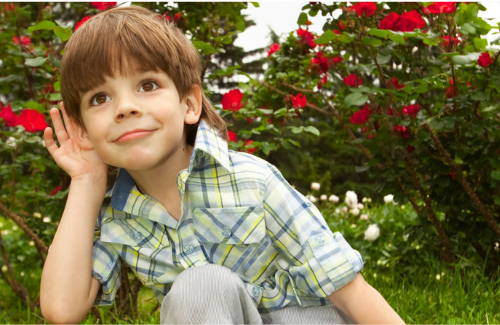Many PLT activities are easily adapted to virtual learning, as we illustrate in a monthly feature in PLT’s newsletter, The Branch. Whether you already have a favorite PLT activity or are new to PLT, check out these “twists of the trade” suggested by PLT coordinators.
This month, Colorado PLT Coordinator Danielle Ardrey shares how to adapt the PLT Activity Sounds Around. It is Activity 4 in the PreK-8 Environmental Education Activity Guide.
Note: In the case you, your students, or someone in the population you serve is hearing impaired, check out our suggestions for some other PLT activities that explore our other senses at the end of this article.
Activity Overview
Sounds Around teaches the science of sound. It allows students a few precious minutes to tune in to the everyday sounds around them, as well as to use words, pictures, and technology to describe and measure what they hear.
Sounds Around is very versatile—with adaptations, you can use it with Pre-K through Grade 8 and to teach science, language arts, social studies, and math concepts. It can serve as a springboard for creative writing and for service learning, as well.
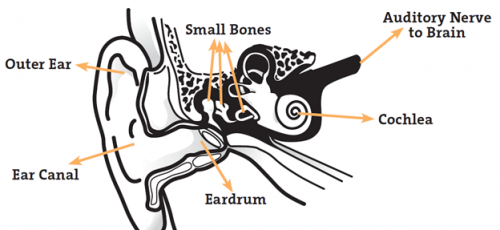
Getting Started
Ask students to write down three to five of their favorite sounds, whether in nature (a bird, a brook) or human-caused (music, sounds from a playground).
Then, explain sound energy. You can use PLT’s graphic to depict how sound waves are transmitted to the ear, then through the ear to send messages to the brain.
You can also watch how Danielle uses the graphic to explain the concept to students.
Finally, the Activity Guide provides more detail, or you can go to other resources online. For example, older students could read and watch the videos on NASA’s Science of Sound website or you can point students to the Global Nature Sound Map.
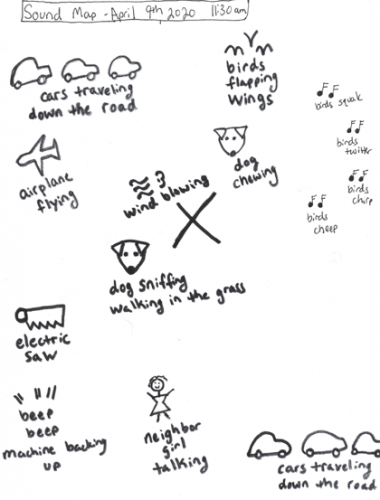
Making a Sound Map
Now comes a fun part of the activity. As homework or during a break from the computer, ask students to sit outdoors, close their eyes for three minutes, and listen. (This can also take place indoors if necessary.)
At the end of the three minutes, they should prepare a “sound map” on which they write or draw what they heard in relation to where they sat.
You can ask them to use their Sound Map in a few different ways:
- Writing and/or Discussing: Students can answer questions such as:
- What types of sound did you hear?
- Where did the sounds come from?
- Which sounds did you like or not like?
You can bring up the concept of “noise pollution”: that is, loud sounds that are unpleasant or actually harmful to our hearing. (Below, we suggest further extensions related to noise pollution.)
- Measuring: Sound is measured in decibels, abbreviated as dB. A number of free apps are available to have a smartphone serve as a sound meter.
- Ask students (or an adult in their home) to download one of these apps.
- The students should return to the place where they made their sound maps and measure the decibels of what they hear.
Animal Adaptations
Many animals rely on their hearing for their survival, and their hearing is far more acute than humans.
A simple way to demonstrate the effect of enhanced hearing is to make a simple “animal ear” with a paper cup.
Have students or their caregivers cut out the bottom of a paper or plastic cup and hold the device to their ears. You can ask them to return to their Sound Map location or sit together and describe what they are hearing.
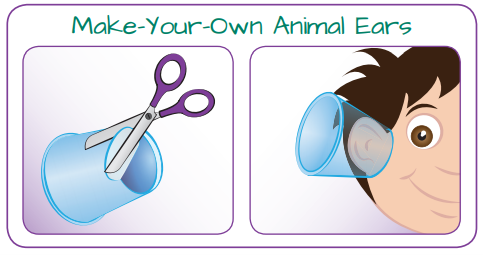
Option: Language Arts
You may have some of your own ideas for poems, books, or other materials related to sound. Or use one, or both, of the pieces included in the PLT Activity Guide:
- On the Pulse of Morning, a poem by Maya Angelou
- The Story of Marsyas, a Greek myth
Students can discuss the role of sounds in the pieces, and they can also write their own poem, myth, or other piece with sound as a central theme (whistling wind, howling ocean, clapping thunder, etc.)
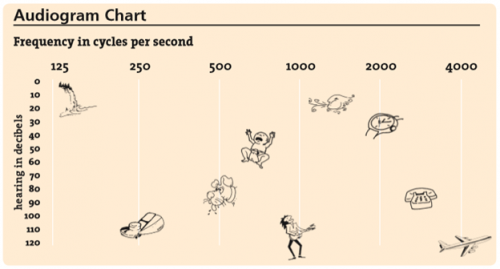 Option: Further Investigation
Option: Further Investigation
The Sound Map can serve as the basis for a number of “compare and contrast” observations. You can have students:
- Go to the same place, at the same time of day, over the course of a few days to observe and measure;
- Go to a different place at the same time of day (e.g., front yard versus back);
- Go to the same place but at a different time of day (e.g., mid-afternoon versus early morning)
Again, students can draw sound maps, measure the sounds they heard, and describe in words and pictures these sounds. You can even ask them to graph their findings on an audiogram chart.
Option: Action
Back to the concept of noise pollution, there are times when something creates an uncomfortable level of decibels, such as a lawn mower nearby or a plane taking off or landing. But, generally, in residential areas, the recommended ambient noise level is 55 dB or less.
The Activity Guide suggests going as a group to a site with a lot of noise, although the current situation makes this difficult. Here are a few alternatives:
- You can go to a busy intersection or other place familiar to many of your students. Record the sounds and take measurements with a sound meter to share with the class;
- If one or more students had discovered a particularly noisy spot in their independent investigation, share this sound with the rest of the class;
- Use an online chart (such as this one from the CDC and focus on more common sounds, such as traffic or motorcycles.)
How can a community reduce noise pollution from one of the sites identified, or, more broadly, from a busy highway, industrial area, or another site (for example, by planting trees as a buffer or constructing a noise barrier)?
Ask students to discuss the options for a noisy site in your community while they consider:
- Do the noise levels change at different times of day?
- Who is affected by the noise?
- What are the options to improve the situation, in terms of cost, resource availability, and time?
Finally, if they come up with viable options, they can turn knowledge into action by contacting the appropriate officials with the results of their investigation and potential solutions.
Assessment Opportunities
- Have students describe how their sense of hearing is important to them. What kinds of information do they receive through hearing?
- Assess the technique and accuracy of the students’ recording or measurements. Examine the accuracy of converting the data to a graph.
- Evaluate the students’ interpretation of the literature used and their own writing.
- Evaluate the students’ understanding of noise pollution through their identification of noise problems in their community and the feasibility of their plan for mitigating one or more of the problems.
Recap of Resources
- PLT’s PreK-8 Environmental Education Activity Guide, Activity 4 – Sounds Around (a simplified version also appears in Nature Activities for Families and an abridged free version for families is available in English and Español.)
- Danielle’s Powerpoint and Video Demonstration
- NASA’s Science of Sound
- Global Sound Map
- CDC: What Noises Cause Hearing Loss?
In addition, review our STEM Strategies for Sounds Around which suggest some ways students can discover the birds living in their backyard or on their block by using their sense of hearing.
For some PLT activities that explore our other senses, check out:
- Sight – Activity 61, The Closer You Look
- Smell – Activity 3, Peppermint Beetle
- Taste – Activity 16, Pass the Plants, Please
- Touch – Activity 2, Get in Touch with Trees
What’s Your Idea?
We would love to hear how you have adapted this or other PLT activities with your students. Drop us a line—and look for additional activities next month in the Branch!
Want to try an abridged version of this activity at home? Our Sounds Around free Family Activity (available in English and Español) is great to try in your own backyard or nearby park or trail!
PLT also offers online, blended, and in-person professional development tailored for specific grade levels, academic standards, environmental topics, and formal and nonformal teaching situations. During COVID-19, many PLT State Coordinators now offer remote professional development to model ways educators can work with students virtually, including adaptations to PLT activities. Learn more.



